The Pontiac Catalina began as the top trim level of the 1950 Pontiac Chieftain. The name came from the tradition of naming cars for beach towns like Bel Air, Malibu, Ventura, and the like. Later applied to the Pontiac Star Chief (Pontiac’s Bel Air), the pillarless hardtop had an open, airy feeling and all the best appointments.
For the 1959 model year, Pontiac ditched the Chieftain and Super Chief model names, instead choosing to go with Pontiac Catalina. Built on GM’s new B-body platform, the Catalina was styled with thin A-pillars, a wraparound windshield, and improved visibility. A new split grille with elongated halves housed horizontally arranged dual headlights. The Catalina was the most affordably priced full-size Pontiac, but had an extensive list of available options.
Inside, the Pontiac Catalina featured standard Morrokide vinyl with cloth inserts, or full Morrokide upholstery, dual ashtrays, cigar lighter, a glovebox snackbar with cup indentations on the glovebox door. Standard floor coverings were of rubber mat, though full carpeting could be had. The options list included a decor group with chrome trim on the pedals, a deluxe steering wheel, full wheel covers, and a heater/defroster.
For the 1961 model year, the Pontiac Catalina received fresh new looks courtesy of a complete restyling. Lines were sharper and windshields flatter. A perimeter-style chassis called the Torque Box gave the Catalina better interior room and better side impact protection while allowing the body to be marginally smaller and lighter. The overall length and wheelbase were both shortened by three inches. The Catalina had a five-inch wider chassis compared to its General Motors corporate cousins. This pushed the wheels farther apart resulting in improved handling and appearance, giving rise to Pontiac’s “Wide Track” marketing platform.
The Pontiac Catalina could be had with a number of powertrain options. Standard issue was the venerable 389 cubic-inch mill fed by a two-barrel carb, producing 215 horsepower, and backed by a three-speed manual or Hydramatic automatic transmission. Mixing optional carb and compression ratios could get you horsepower outputs of 267, 303, 318, 333, or 348 ponies. A 363-horsepower variant was available strictly for competition use, and toward the end of the year, a dealer-installed 421 cubic-inch Super Duty engine could be had.
Our feature 1962 Pontiac Catalina is number 103 of the 155 421-powered Catalinas. Showing just 21,000 miles on the clock, it has lived its entire life in the western United States, and wears all of its original sheet metal. It was built with the factory aluminum package, with the hood, front and rear bumpers, brackets, and fenders all done in aluminum. The Catalina has had a single repaint in the correct Mandalay Red hue, which had been ceramic coated. The Catalina rolls on the iconic eight-lug wheels wrapped in blackwall bias-ply rubber.
The Pontiac Catalina’s bench seat is covered in red Morrokide vinyl with cloth inserts. Equipment includes the Decor Group, factory Sun tachometer, Hurst shifter, radio delete covered with a spiffy “Shifted by Hurst” emblem, heater/defroster, windshield washers, and back-up lamps.
Beneath the Pontiac Catalina’s hood is the numbers-matching 421 cubic-inch Super Duty engine, fed by the original dual Carter 500CFM carburetors sitting atop an aluminum intake. The 421 is stuffed with forged aluminum pistons, and forged steel rods and crank. The original T-10 wide ratio four-speed manual moves power to the wheels through a 4.30 Saf-T-Track rear end.
The sale of this 1962 Pontiac Catalina Super Duty includes Pontiac Historic Society documents, copies of the build sheet, window sticker, and engine order form, a Pontiac High Performance and Super Duty spec and parts manual, a dealer brochure, feature article in the August 2005 Hemmings Muscle Machines, and previous registrations.
Subscribe to GM Authority for more Pontiac Catalina news, Pontiac news and non-stop GM news coverage.

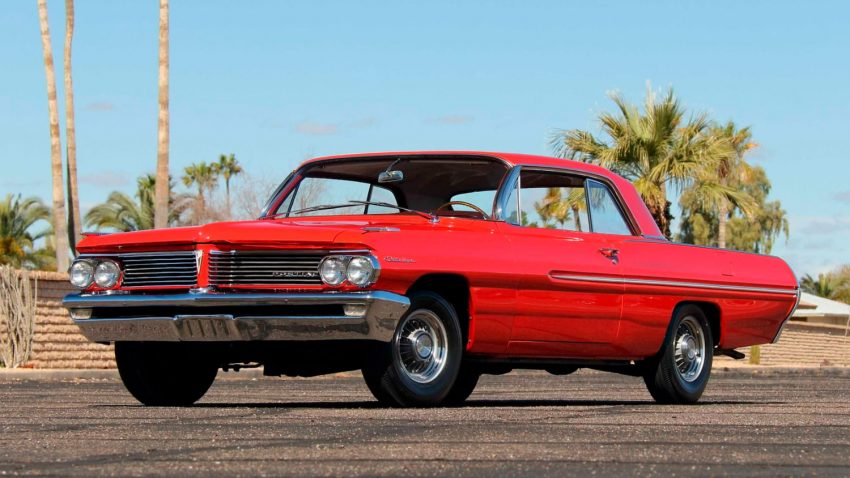




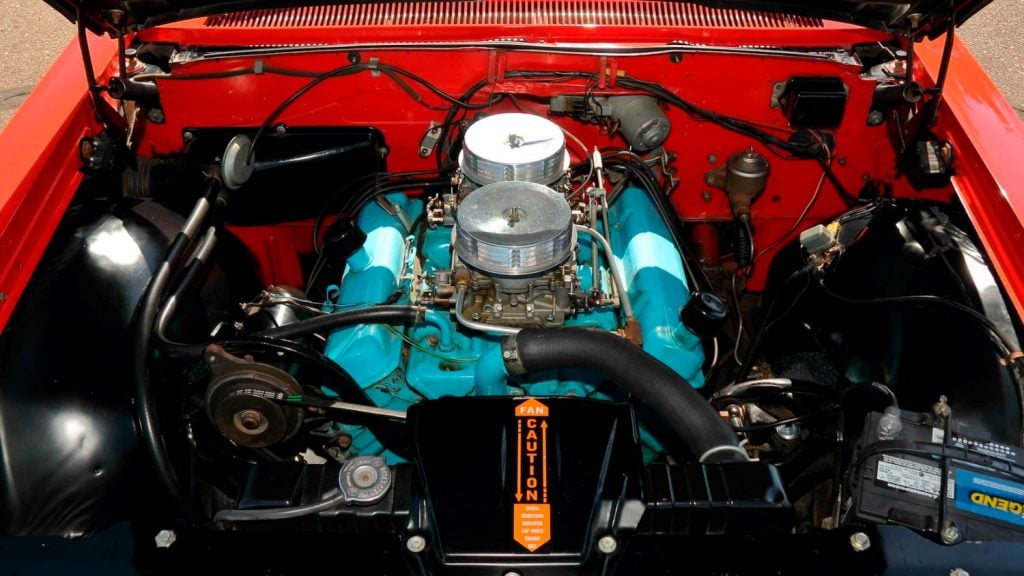




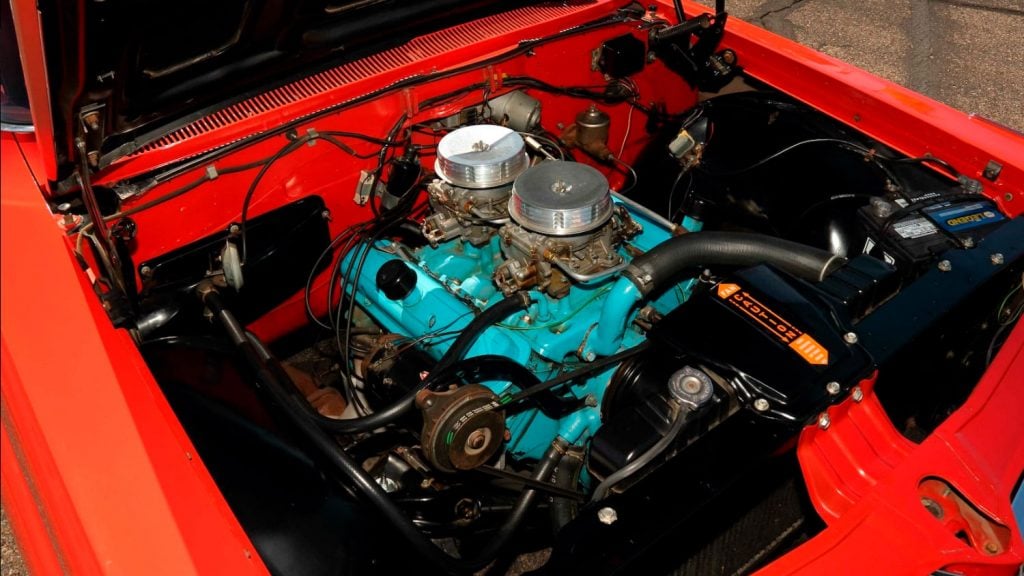


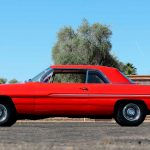


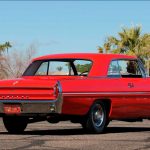

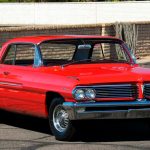




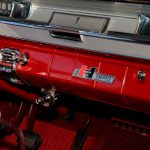
















Comments
Love it! Now that’s a car! Back when cars had style and muscle!
Wow, so beautiful. I could live with that as my only car forever…
Best Poncho ever made. I tried to purchase one in ‘62 but missed the build changeover. Bought a ‘63 GP 4 speed and loved it.
Took 40 years to find the perfect Catalina to have restored to my and Pontiacs specs including the Royal Pontiac BobCat dealer package. Check it out on google… 1962 royal bobcat…
Many stories about it on web.
I remember when these ponchos were sitting on the Pontiac motors parking lot in Pontiac mi. where we lived close by. I owned a 1962 grand prix a few year s back and my brother helped me stuff a 1970 455 engine in it. Th car was super fast, and I remember beating a 1969 road runner not to mention a big block Chevelle on Woodward Ave no less. Those were the good ole days. Wife and I are headed to pigeon forge in June for the all Pontiac show, can’t wait and maybe we’ll see ya there.
I recall seeing one of those at Alton Dragway back in the day. It was running open headers and sounded like a dragster in a Pontiac body when it fired up. It was indeed running mid 12 second bracket consistantly…..a sight to see!
Sweet!
Beautiful car. Always liked the Super Duty name on the top of the line Pontiac engines. Ford later coopted it for their trucks.
One of my favorites. I had a 62 Catalina wagon with 389, tri-power, 4 speed, buckets & console , painted Royal plum. Traded for a 63 Catalina convert.
Too cool, a high performance wagon, that would be worth a mint today!
Thanks! Though, that’s the problem. The good ones weren’t worth a lot when I had them. But, like a lot of the other folks here, at least we had them.
My dad bought a new ’59 Catalina convertible from a dealer he knew in Alexandria. VA. Being from the “old school” he had never owned an automatic. At that time, I found out later, GM had just begun computer ordering and started packages. Turns out that even though there were 10 different 389 engines offered, a Catalina convertible with a 3speed would only come with either a 330 or 345 hp engine. Do you think racing might have been the thought?? These were factory blueprinted I found out later. When my dad raised all sorts of hell at the cost of the 330 engine it came with the dealer felt sorry and let him have the whole car at his cost. it also had a 3:64 rear end. Anyway when I got home from bootcamp that fall I took it down to the Pentagon where we did our racing and nothing could beat that car off the line. Amazing! just thought I would add a little history…
The 62 & 64 Catalina hardtops were the most beautiful cars ever built. I bought new a black 64 2+2 with a Warner Gear T-10 wide ratio 4spd and 3:70 rear end. Kept it 20+ years and rue the day I sold it.